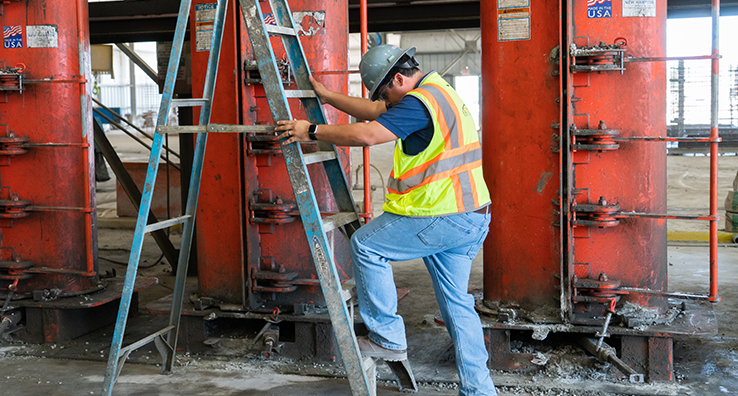10 Suggestions from OSHA on How to Kick Off Your Safety Program

Why is having or establishing a strong health and safety program of such crucial importance? Well, put simply: human consequences!
People get hurt, people get sick, and people die from preventable incidents in the workplace. Beyond the immediate impact to the affected worker, the consequences include long-term emotional suffering and financial hardship for families of people who can’t work anymore due to injury or worse.
But these events can be significantly reduced when a proper safety program is implemented and reinforced. Here are OSHA’s 10 recommendations for building a strong health and safety program:
1. Make health and safety a core value. Hopefully we’re already doing this! But if it’s an area that needs attention, we can start by ensuring that we have a formal, written health and safety policy established and communicated. This lets everyone in our organization know that safety comes first.
2. Lead by example. To reinforce this core value, management personnel from the top on down must lead by example and always abide by the rules, inspiring others to do the same. No one can be exempt!
3. Establish a formal communication protocol so that our employees know how to report incidents and hazards and have a place to voice their concerns without any fear of retaliation. It will also make life a lot easier when there is a clear path to follow.
4. Ensure that sure everyone gets the training they need. Education is empowering! The more our people learn about the importance of safety and how to maintain it, the more likely they are to follow procedures and support the program.
5. Set up inspection programs with employees to identify activities, equipment, or materials that might be of concern. Using checklists will be helpful because it prevents things from slipping through the cracks.
6. Collect ideas from the workforce to identify and control hazards. Train teams on methods to identify hazards and evaluate risk. Our workers are out on the shop floor every day, and the more trained eyes we have on what’s happening there, the more opportunities we’ll find to improve.
7. Implement hazard controls. Does our team know how to select and implement controls? If not, start training them, now! Be sure to educate them on the use of the hierarchy of controls, starting with elimination of hazards and only using PPE as a last resort.
8. Prepare for emergencies. Identify any foreseeable emergency situations that could cause injury or ill health, develop emergency action plans, train, and drill. Every single person in our facility should know what to do in the event of an emergency. Practice those emergency response procedures until we’re sure they’ll protect people in a real emergency.
9. Implement a process for management of change. When we introduce changes, for example new products, equipment, new chemicals, new employees, process changes, or restructuring, we may create new hazards that can impact every person in our facility. Have formal processes to identify hazards and evaluate OHS risk associated with changes and involve the work force in making these assessments and implementing any needed controls. Consult with employees on potential health or safety concerns they may have before making these changes and be sure to complete any new training needed.
10. Plan for ongoing improvement. Basic compliance is a starting point! Once we achieve that, we want to go beyond compliance and keep looking for ways to continually improve our health and safety performance.
And there you have it! Feeling a little more prepared now? If you’re interested in doing a deeper dive, check out our webinar with an hour chock full of more tips and insight on establishing a successful safety program.






